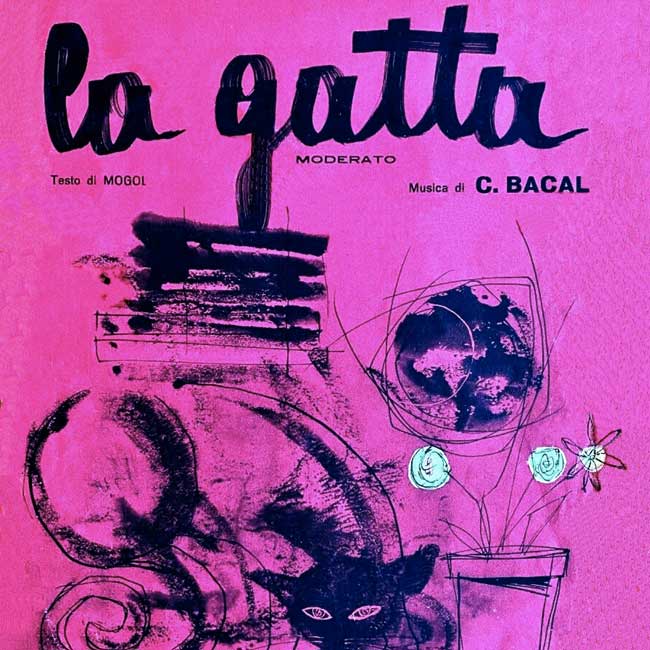La gatta

In the meantime, we had moved house. The attic apartment in Boccadasse had been emptied, boxed up and abandoned to a general sadness. The little Siamese cat who never left me, sleeping on my stomach while I was catching a little sun on the terrace and leaving a white brushstroke in my tan near my navel, curling around my neck while I painted, with her paws limp on my shoulders, like an inflatable cushion for long-haul flights, had gone into the cage and been quite good and quiet as I carried her to the new apartment on Corso Paganini. I should have read the signs. Up until then, she’d been a great talker. We called her Ciacola for this: in Veneto it means “chatterbox”. She was a talking cat like the animals in fairy tales or comics: she talked, proposed, suggested, protested, had her say on every subject. When there were decisions to be made, her position was as important as ours. In the presence of a stranger, the last word was unquestionably hers; if Ciacola didn’t like a person, they never set foot in our house again. She died two months after the move. The attic apartment had become too small for us. For her it was the only condition of life. My callus became infected, became an ulceration that need urgent treatment. To distract myself from the burning, I jotted down what I knew in the key of C on the guitar, all I could do on the instrument. I got a trace of something out of it, an intention, and didn’t quit until something happened. This something was a little pet, a little rhyme: La gatta. It was 1960, the year of the Tambroni government and the police had the green light to shoot people in the square. A month later Nanni Ricordi called to tell me about the sales numbers for the single, which I had designed the cover for, and written a short film about. They tell me that it’s considered to be the first Italian music video clip in history. Nanni wasn’t bursting with enthusiasm: we were at one hundred and nineteen copies. Another month went by, maybe two, and La gatta was at the top of the charts. Walking through the city I heard a man on a bicycle whistling it and a strange sensation crept over me, a mixture of pleasure and alarm. That gentleman had taken a tool I’d made and was using it for his own interests, as an object that came in handy. It was the warning of a specific truth, which has come to light over the years, namely that a song stops belonging to you before you know it, and it takes a great effort not to become its private property. La gatta represents a colossal misunderstanding, astonishing for its longevity and diffusion. It would be the song that mothers sang to children, to make them behave, perhaps, or to amuse them, or who knows what. But that’s okay. After all, the greatest gratification is that children, who are astute, chew on it like a ciungai with tamarind, tasting the bitter aftertaste that is mistaken for sugar in the mother’s mouth.
Excerpt from: Paoli, Gino, in collaboration with Giovanni Paoli, Sapore di note. I miei affetti, I miei valori, le mie passioni, Rome-Bari, Laterza, 2005, pp. 70-72
Note: Regarding the drawing of the cat Ciacola on the cover of the single, Paoli is confused about the memory, as La gatta was released on single with a standard perforated cover by Ricordi. The drawing Paoli refers to in the text appears in part on a later Extended Playing (EP) record which also included La gatta. The complete drawing can be seen (and this is what we’ve chosen to illustrate the lyrics) on the title page of the score, with the cat Ciacola in clear view. The score also shows the signatures of Mogol and C. Bacal (pen name of Carlo Donida) as authors of the song as Paoli was not yet registered with the copyright agency SIAE
